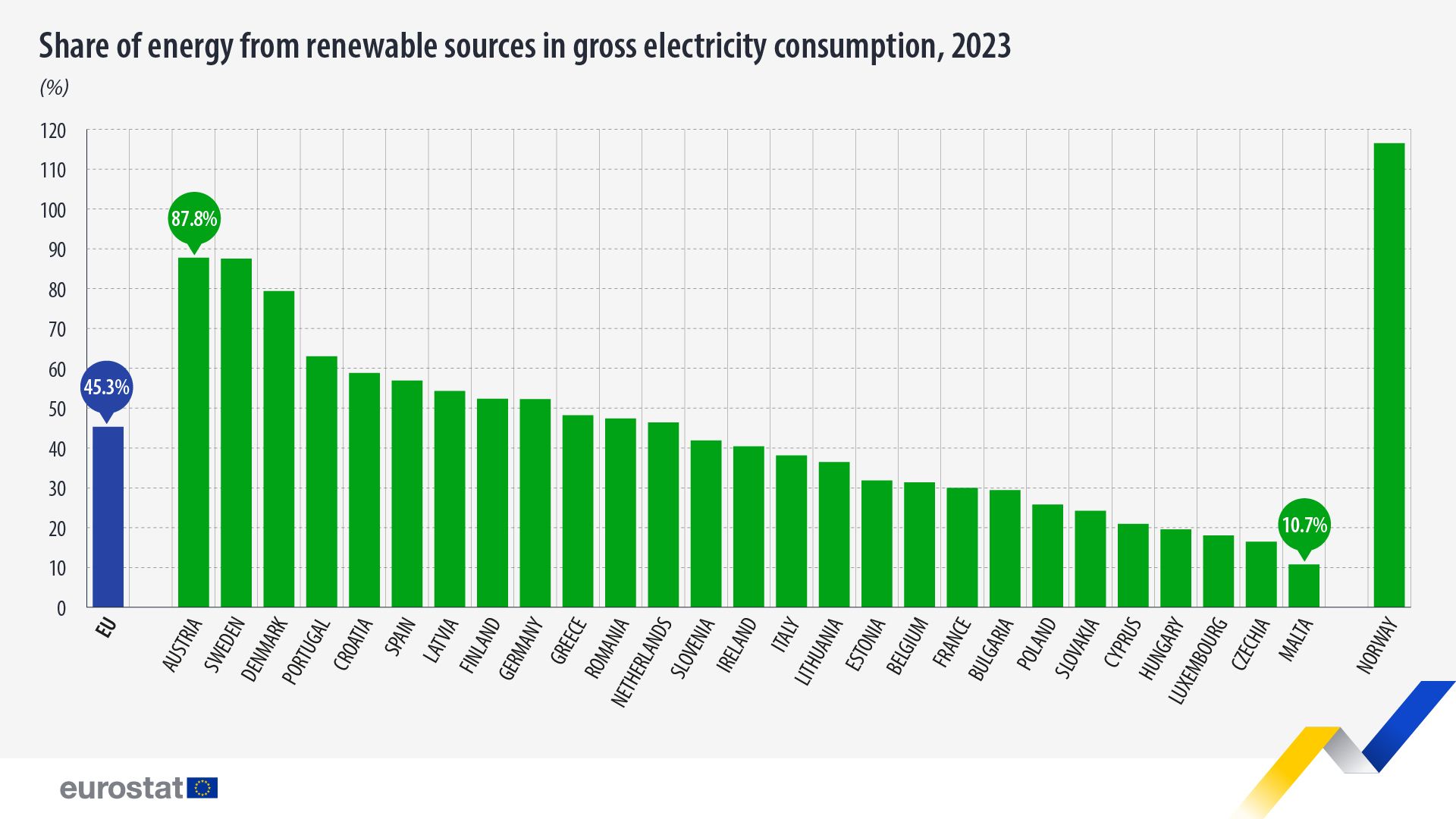Energy consumption from renewable sources in Europe has reached a record high.
In 2023, the share of gross electricity consumption in Europe generated from renewable energy sources exceeded 45% of total energy consumption, marking a significant increase compared to 2022. This is a record level for the European Union, reported the Eurostat press service.
According to the statistical organization, in 2023, renewable energy sources accounted for 45.3% of gross electricity consumption in the EU, which is an increase of 4.1 percentage points (p.p.) compared to 2022, which had 3.5 p.p. It is noted that this figure represents the largest annual increase in the share of renewable energy in gross electricity consumption since 2004. The highest increases in gross electricity consumption in EU countries were recorded in 2023 (4.1 p.p), 2022 (3.5 p.p), and 2020 (3.3 p.p).
Wind and hydro energy together made up more than two-thirds of the total electricity generated from renewable sources, contributing 38.5% and 28.2%, respectively. Solar energy production accounted for 20.5% of renewable energy generation, while solid biofuels and other renewable sources represented 6.2% and 6.6%, respectively. However, among all types of renewable energy production, solar energy is the fastest-growing, with output increasing from 7.4 TWh in 2008 (1% of the total) to 252.1 TWh in 2023.
According to Eurostat, over 75% of the electricity consumed in 2023 was produced from renewable sources in three European countries:
- in Austria (87.8%, primarily hydropower),
- Sweden (87.5%, primarily hydropower and wind energy),
- Denmark (79.4%, primarily wind energy).
Shares above 50% were also recorded in:
- Portugal (63.0%),
- Croatia (58.8%),
- Spain (56.9%),
- Latvia (54.3%),
- Finland (52.4%).
Meanwhile, the lowest share of renewable electricity was noted in Malta (10.7%), the Czech Republic (16.4%), Luxembourg (18.0%), and Hungary (19.5%).
Among European countries that are not EU members, Norway has the highest share of electricity production from renewable sources (almost 120%) – the country produces more electricity from renewable sources than it consumes in total.
